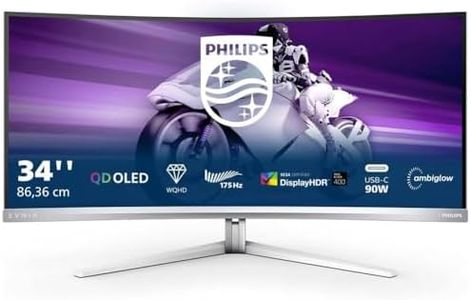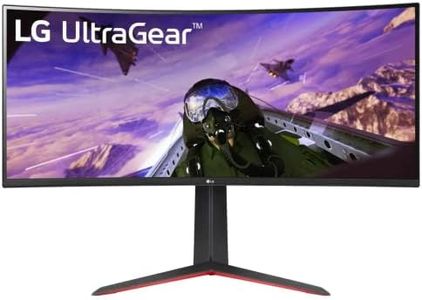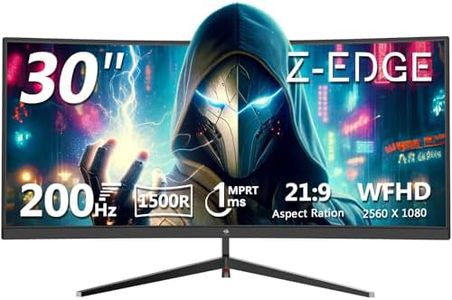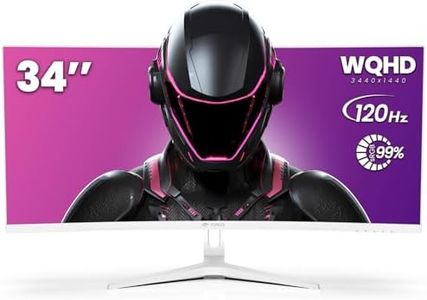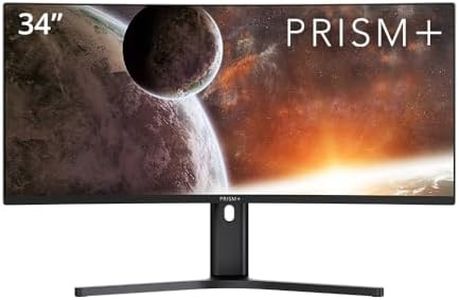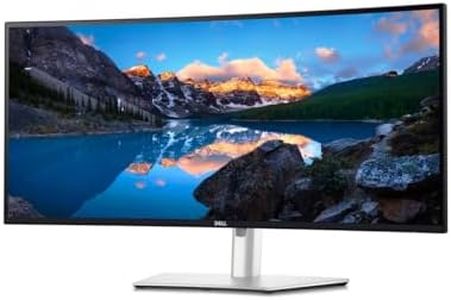We Use CookiesWe use cookies to enhance the security, performance,
functionality and for analytical and promotional activities. By continuing to browse this site you
are agreeing to our privacy policy
10 Best Ultrawide Gaming Monitors
From leading brands and best sellers available on the web.Buying Guide for the Best Ultrawide Gaming Monitors
Choosing an ultrawide gaming monitor can transform your gaming experience, giving you a wider field of view and greater immersion. It’s important to pick a monitor that matches both your system’s capabilities and the type of games you enjoy. Focus on the specifications that will impact your experience most, such as screen size, refresh rate, resolution, panel type, response time, and connectivity. Mapping out your usual gaming preferences and understanding what each spec means will help you narrow down your choices and select a monitor that perfectly matches your needs.Screen Size and Aspect RatioThis spec tells you how big the monitor is and how wide the display stretches compared to its height. Most ultrawide monitors use a 21:9 aspect ratio, which provides a panoramic view compared to the standard 16:9. Sizes typically range from around 29 to 49 inches diagonally; smaller sizes are more desk-friendly, while larger sizes envelop you for maximum immersion. Think about your desk space and how close you’ll be sitting—a larger screen is more impressive but may be overwhelming if you sit very close or have a small desk.
ResolutionResolution indicates how many pixels are shown on screen, affecting the detail and clarity of images. Common ultrawide resolutions include 2560x1080 (Full HD ultrawide), 3440x1440 (UltraWide QHD), and 5120x1440 (Super UltraWide). Higher resolutions offer sharper images but require a more powerful computer. If you mostly play fast-paced games or have a less powerful graphics card, a lower resolution may provide smoother performance, while a higher resolution is ideal for visually stunning games and multitasking.
Refresh RateRefresh rate is measured in hertz (Hz) and tells you how often the monitor updates the image per second. Common refresh rates are 60Hz, 75Hz, 100Hz, 144Hz, and higher. The higher the refresh rate, the smoother gameplay looks, especially in fast-paced or competitive games. If you play mainly esports or first-person shooters, a refresh rate of 120Hz or above can give you a competitive edge, while slower games or cinematic titles are comfortable with 60–100Hz.
Panel TypeThis refers to the technology that creates the picture: the most common are IPS, VA, and (less often) TN. IPS panels offer great color accuracy and wider viewing angles, making them ideal for vibrant visuals and general use. VA panels typically have better contrast and deeper blacks, which can be stunning for atmospheric games. TN panels are faster and cheaper, but often with poorer color and viewing angles. Choose IPS for color-rich games and versatility, VA for rich contrast, and TN mainly if you prioritize speed over visuals.
Response TimeResponse time, measured in milliseconds (ms), tells you how quickly a pixel can change from one color to another. Lower numbers mean less motion blur; typical values range from around 1ms to 5ms. Competitive gamers should look for lower response times (1–2ms) for crisp, blur-free action, while casual gamers or those playing slower-paced games can comfortably use monitors with slightly higher response times.
Adaptive Sync (G-Sync/FreeSync)Adaptive Sync technologies like G-Sync and FreeSync reduce screen tearing and stuttering by synchronizing the monitor’s refresh rate with your graphics card’s output. This creates smoother and more enjoyable gameplay, especially when frame rates vary. To use Adaptive Sync, match your monitor’s technology (G-Sync for NVIDIA, FreeSync for AMD) with your graphics card brand. If you care about smooth performance or play games with fluctuating frame rates, seek out these features.
CurvatureUltrawide monitors often come with curved screens, which help pull the edges of the display into your field of view for a more immersive feel. Curvature is noted by a number (like 1800R or 1500R); lower numbers mean a tighter curve. A stronger curve is more immersive for gaming and large screens, while a gentler curve or flat panel may work better for mixed use or if you’ll also use your monitor for work.
Connectivity and PortsThis spec indicates what devices you can connect and how easily. Common ports include HDMI, DisplayPort, USB-C, and headphone jacks. More and newer ports mean more flexibility, such as connecting multiple devices or using advanced graphics features. If you plan to connect several devices, check for multiple HDMI or DisplayPort options, and consider if you need USB ports for peripherals or a USB-C input for easy laptop hookups.




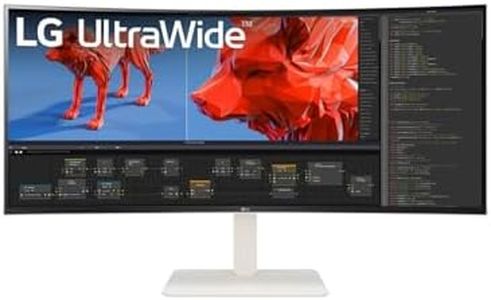
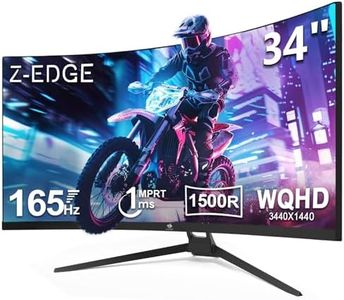
![PRISM+ PG400U PRO 40" IPS Panel 144Hz 1ms UWQHD 21:9 [3440 x 1440] Adaptive-Sync Pro Gaming Monitor](https://images-proxy.bestreviews.guide/3FKtaHeggDgnR5W1-XBJoZVJLjk=/0x300/https://m.media-amazon.com/images/I/41d-326OsRL._AC_CX679_.jpg)
